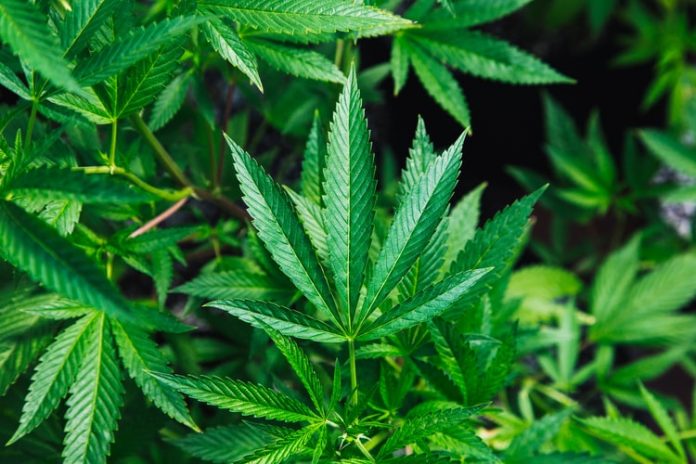This article is written by Vandana Shrivastava, a student of B.A.L.L.B.(Hons.) at the Institute of Law, Nirma University, Ahmedabad. The article discusses the cultural background of marijuana in India, its legal status in the country and the arguments in favour of and against the legalisation of marijuana in India.
Table of Contents
Introduction
Alcohol and tobacco are common toxic substances used by people across the world. In India, the use of alcohol is banned in a couple of states. Drug use is another prevalent practice in the country, but it still happens behind closed doors, since it is banned in India. The situation has not always been the same. In ancient Indian texts, marijuana has been defined as the drug of Gods, the Vedas encourage the consumption of the drug as well.
Marijuana was legal in India until 1986 when the government enforced the Narcotics and Drugs Prevention Act, 1985, which changed the position of the drug in the country forever. Since the commencement of the ban, marijuana supporters have been striving for its legalisation by advocating its benefits to humans. The opposers of marijuana almost consider it as a taboo and make counter-arguments to ensure the continuance of the ban on marijuana. This article discusses the arguments in favour of and against the legalisation of marijuana, and briefly reflects the highlights of the petition filed before the Supreme Court for the legalisation of marijuana.
Marijuana
Cannabis is a psychoactive drug derived from the Cannabis plant. It is used for medical, recreational and spiritual purposes all over the world. The Mexican term for cannabis is marijuana. Its major component is tetrahydrocannabinol (THC), with 465 other compounds and at least 65 cannabinoids. Cannabinoids are those compounds that are structurally similar to THC. Cannabis or marijuana can be smoked, vaporized, consumed within the food or could be used as an extract. A Psychoactive drug, also referred to as psychopharmaceutical is a chemical substance responsible for stimulating brain functions to generate alterations in mood, consciousnesses, perception, and behaviour of the user.
The United Nations Office on Drugs and Crime (UNODC) stated that the amount of THC determines the potency of cannabis. Marijuana has three forms of products- flower or fruits, resin (also known as hashish) and oil (hash oil). While cannabis generally contains 5% THC, the resin is capable of containing up to 20% of THC. Cannabis oil has the capability of containing more than 60% THC content.
Effects
Marijuana has both mental and physical effects. The presence of THC instigates brain cells to release dopamine, which makes a person euphoric. Marijuana develops a stoned feeling and enhances a person’s thoughts and perception besides hampering the concentration capabilities of a person, impairing short term memory and body movement. It relaxes a person and increases their appetite. The effect of marijuana lasts from 2 to 6 hours, depending on the quality and the method of consumption. When taken in high doses, it could cause psychosis, delusions and even hallucinations along with paranoia, anxiety, and panic.
The physical effects of marijuana are accelerated heart rate, difficulty in breathing, nausea and mental problems in children whose mothers consume marijuana during pregnancy. Short-term physical effects of marijuana include red eyes, dry mouth and fatigue. A person who has been using drugs since adolescence can become an addict in the long term. It could cause chronic coughing and reduced immunity to respiratory infections.
It was found that 147 million people in the world used cannabis, which is equivalent to 2.5% to 4.9% of the world population. The users varied among the age of 15 to 65. Most of the countries have banned the use of marijuana, but it is still widely used in those nations.
Uses of marijuana
Medical use
Due to the ban on marijuana in the majority of the major countries, limited studies have been done on the medical significance of marijuana. However, several pieces of evidence are suggestive of the capabilities of marijuana to curtail nausea during chemotherapy, to create an appetite in people diagnosed with HIV/AIDS and also for the treatment of chronic pain.
At present, owing to the same properties of cannabinoids as the body chemicals used in appetite, memory, movement and pain, marijuana is used to treat Alzheimer’s disease, cancer, Crohn’s disease, epilepsy, eating disorders, glaucoma, mental health conditions like schizophrenia and PTSD and muscle spasms. Research suggests that cannabinoids may reduce anxiety and inflammation, kill cancer cells and improve weight gain by stimulating appetite in people.
Recreational use
When used for recreational purposes, the desired effects of marijuana are relaxation and euphoria. It could be smoked as a dry mix, or as a cigarette, in a pipe or a bong or blunt. It could be mixed with food or brewed as a tea. Besides the previously stated effects, the user could expect a false sense of time and a trippy feeling wherein they struggle to differentiate between people and places. High doses could show altered body images, illusions, pseudohallucinations, and ataxia. Despite marijuana being safer than tobacco, it is often associated with reduced quality of life.
Spiritual use
Marijuana holds a sacred position in many tribes and civilisations. It serves as an entheogen, a chemical substance that is used in religious, shamanic or spiritual contexts. Centuries ago, the Vedic period in the Indian subcontinent described it as a spiritual chemical with godly properties. Greek mythology also has accounts of a significant drug that eliminated misery in the empire. The modern culture was enlightened with the spiritual use of cannabis when the disciples of the Rastafari movement promoted the use of cannabis as a sacrament and an aid to meditation. However, the initial accounts of cannabis are still held by the Indian Vedas.
Current state in India
Indians have been using marijuana for centuries. It commenced sometime in the 2000 BC. The cannabis preparations in India are:
- Charas (resin);
- Ganja (flower); and
- Bhang (seeds and leaves).
Bhang is the most widely used legal drug in India. The NDPS Act permits the consumption of bhang in India. However, several states have imposed their own laws to ban the consumption of the same. Few states have imposed a limitation on the quantity of the bhang that one person could carry at a time, along with age restrictions. The states of Assam, Mumbai, and Gujarat have banned the use of bhang from their respective state laws. But, in February 2017, Gujarat government legalized the use of bhang citing that it is consumed as a blessing from Lord Shiva.
Laws in India
The Single Convention on Narcotic Drugs treaty in 1961 classified cannabis as a hard drug. India was a party to the treaty. Owing to the cultural and traditional value of marijuana in the country, the Indian delegate put forth the opposing view on the ban. Consequently, marijuana remained legalised in India but India had to limit its export of Indian hemp. Despite the settlement, the US continued to pressurize India to club the definition of marijuana with hard drugs and impose a ban on the same.
25 years after the Convention, in 1986, India established the NDPS Act in the country in accordance with the Single Convention treaty, imposing a ban on the manufacture, possession, consumption, and sale of marijuana. The definition of marijuana under the treaty excluded the seeds and leaves of the cannabis plant from the definition of hard drugs. Due to the exclusion, bhang was left out from the definition of cannabis/marijuana. Bhang still remains a widely consumed drug especially in the festival of Holi.
2015 was the year of the Great Legalisation Movement in India. The year witnessed first organised efforts towards the legalisation of marijuana. Even one of the Lok Sabha MPs stated on Reddit that he supported the legalisation of the product and that he has consumed it on several occasions as well. In July 2017, Maneka Gandhi, the Union Minister for Women and Child Development in India encouraged the legalisation of the use of cannabis for medical purposes. It resulted in the issuance of the first license to grow cannabis for research purposes. The Council of Scientific and Industrial Research (CSIR), in collaboration with the Bombay Hemp Company (BOHECO), was granted the license.
Later, in 2017, the founder of the Great Legalisation Movement, Mr. Viki Vaurora wrote an open letter to the Prime Minister and MPs of India, urging them to legalise cannabis and hemp for medical and industrial use on an urgent basis. The Prime Minister’s Office then asked the Ministry of Health and Family Welfare to conduct research to procure the potential benefits of cannabis and issue a response to Mr Vaurora’s letter. In 2019, the Delhi High Court agreed to hear a petition filed before it by the Great Legalisation Movement Trust, wherein the Trust had challenged the ban on marijuana. The grounds for PIL are the arbitrary, unreasonable and unscientific nature of the NDPS Act.
Arguments on marijuana legalisation
Arguments in favour
The supporters of marijuana legalisation firmly believe that marijuana should not be accessible to adolescent children but to rational/sound-minded adults. Despite its widespread illegal status, marijuana remains the most commonly used drug in the world with an approximate figure of 125 million consumers. In India, especially, marijuana is not a mere drug. It possesses a historical faith and mysticism. Traditional people believe that it assists a person in attaining ‘ecstasy in the original sense’.
In 1986, after the implementation of the NDPS Act, consumption, sale, manufacture, and possession of marijuana were titled as illegal acts. Since then, the country has witnessed a number of initiatives towards the legalisation of the drug in India. Supporters believe that marijuana should be legalised for the following reasons:
Elimination of illegal trade
India has an enormous black market for the sale of marijuana in the country. Legalisation or decriminalisation of the trade would ensure that the government earns taxes, farmers, and retailers develop a new source of income. With regulations, everyone would be better off except for the drug dealers.
Safer and cheaper than alcohol and tobacco
While marijuana is known to have side effects, it is an established fact that limited consumption of marijuana does not have severe side-effects. Besides, excess consumption of anything would have an adverse impact. Tobacco is more addictive and lethal than marijuana but it remains legalised in the country. It is an established fact that stoners tend to remain calm, unlike alcoholics who often engage in rash driving or violent acts. Medical research also suggests that marijuana is not as harmful as alcohol is.
Marijuana addiction is scarce
Studies reveal that dependence of tobacco, alcohol and cocaine users stood at 32%, 15%, and 16% respectively. Among the users of marijuana, only 9 per cent of the users became clinically dependent on the use. Limited or controlled use of marijuana could also restrict the development of an addiction.
Creation of job opportunities
Legalisation or decriminalisation of marijuana in India would generate employment opportunities. Currently, the market is governed by illegal drug traders. Their sales and quality are not regulated. Once the product gets rid of the illegal tag, it would be subjected to regulation. Its manufacture, processing, transportation and sale would require manpower and vehicles. The same would generate employment. Given the scale of consumption, it has the potential to generate employment in all parts of the country.
Taxation would generate government revenue
Currently, the traders charge high amounts from marijuana users, since it is sold illegally. The money goes in their pockets and never makes it to the government because the entire process happens in the black market. 500 economists led by Nobel Prize winner Milton Friedman wrote an open letter to Geroge Bush, the erstwhile President of the US, calling out for legalisation of and taxation on marijuana, similar to other goods.
Medical benefits of marijuana
As stated earlier, there is considerable proof to show that marijuana has medicinal properties, capable of treating cancers, improving metabolism, creating appetite and curing several other physical and mental diseases. It releases dopamine, which makes a person euphoric and calm. It provides a peaceful mental atmosphere to the user.
Assistance to locals
Himachal Pradesh and Tamil Nadu are the go-to places for marijuana in India. Tourists especially visit those places to consume the marijuana produced in those regions. The fact is commonly known to a majority of the people in the country. However, the illegal status of marijuana deprives the farmers of their much-deserved earnings because drug dealers offer them very cheap prices for marijuana and the local police warns them against destroying the cultivation as well. In the presence of common knowledge, it would be beneficial to the farmers to have a safe and uniform source of an appropriate income.
Improvement of quality
Without legalisation, marijuana would still be sold to consumers. At present, consumers buy whatever the dealers sell to them. With proper regulations, a systematic approach would follow with a surety of quality products. In the absence of regulations, dealers often mix psychoactive drugs like weed and hash with hard drugs like afeem to enhance the effect of the product. Besides, such hard drugs are addictive to a manifold as compared to marijuana. Therefore, the regulation of marijuana becomes a necessity.
Myths about marijuana
A popular belief is that marijuana overdose could kill a person. Dr Paul Hornby stated that a person could only overdose on THC after smoking 15,000 marijuana joints within 20 minutes. No matter what, there is no chance on earth that a person would be able to smoke as many joints within such a short span. The withdrawal symptoms of marijuana are minimal. As a matter of fact, they are considerably meagre as compared to the withdrawal symptoms of tobacco.
The marijuana prohibition is a massive failure in India
Apparently, hash and opium are produced in multiples of tens of thousands in Himachal Pradesh annually. Not more than 500 kgs are seized from the State every month. Reports suggest that more than 1600 hectares of land foster cannabis cultivation. The rate of cannabis consumption has been witnessing a rise since always. Marijuana consumption is becoming popular among the youth, and early teenagers are engaging in the use as well. Without any rules, they could procure marijuana from drug dealers without any age identification.
The NDPS Act was implemented in 1986. It has been more than 3 decades but the country has only witnessed an increase in the consumption of marijuana. It indicates the failure of the State machinery to implement the Act. Regulations would protect young children who indulge in marijuana consumption out of peer pressure and end up doing regrettable acts. Medicines for mental diseases are only sold on prescription in India. The similar practice could be adopted to enforce the sale of marijuana in the country. It is a popular belief that marijuana, hashish and bhang were wrongly clubbed with hard drugs like heroin and cocaine. Since all these are defined together, the punishment for violation of the NDPS Act is 10 years of jail. As a consequence of the law and its punishment, people who refrained from consuming hard drugs (not marijuana) shifted to stronger substances because the consumption of either of the substances attracts the same punishment. So if one knew that they could be punished, they might as well be punished after consuming everything they can.
In a survey conducted by the Ministry of Social Justice and Empowerment in 2019, it was revealed that 2.83 per cent of Indians were users of cannabis. A study by German data firm named ABCD found that Delhi and Mumbai are home to the third and sixth largest cannabis consumer base in the world, with 38.2 tonnes and 32.4 tonnes of cannabis consumption respectively. Further, the UNODC’s World Drug Report, 2016 highlighted that the cost of cannabis in India is one of the lowest in the world at USD 0.10 per gram.
India and the US have contrasting views on the use of marijuana and the same reflected on their drug policies. In the 1940s, most of the States in the US had banned all narcotics drugs. India, on the other hand, had a more pragmatic approach towards the same. India focused on hard drugs like opium. In 1893, the Indian hemp drug commission hailed cannabis for its properties that caused mild euphoria and pleasant relaxation to its users. Instead of addressing it as an addiction, it was appraised by the commission.
Arguments against legalisation
The International Classification of Diseases and Diagnostic and Statistical Manual of Mental Disorders has classified cannabis as an addictive substance, capable of causing dependency disorders. While the supporters of marijuana claim that ‘only’ nine per cent of marijuana users become clinically dependent on the substance, the opposers use the same figure to substantiate the existence of clinical dependency on the drug. Further, there is considerable emphasis on withdrawal symptoms of marijuana which include irritability, sleeping issues and dysphoria. For the users who try to quit the consumption, only 71 per cent of those succeed in quitting.
The NDPS Act was a result of an elongated international pressure driven by the UN’s Single Convention on Narcotic Drugs, 1961. Supporters often claim that cannabis controls nausea and vomiting. However, there exists no statistical proof to verify the significance of cannabis over regularly available drugs. In fact, it is paradoxical that there exists cannabinoid hyperemesis, an excessive vomiting syndrome in marijuana addicts. Even to stimulate one’s appetite, there are clinically advanced methods of doing the same. It is admitted that cannabis is effective in reducing pain, but it is less safe than the approved opiates. The effects of marijuana on extreme forms of epilepsy and multiple sclerosis are positive. But there still exists a loophole because sufficient studies have not been conducted to substantiate the claim. While the claims of positive impact remain sceptical, it is established that marijuana poses a great threat of adverse effects.
There is no authentic evidence to show the capabilities of marijuana to treat Crohn’s disease, sleep disorder, glaucoma, etc. The opposers of legalisation claim that medical effects of marijuana, as claimed by the supporters, are not as firm as they are represented to be. There is a multitude of safe alternatives available in the market. The argument that marijuana is a part of Indian tradition and has been used for thousands of years without adverse effects does not hold ground because the life expectancy in 1947 was 32 years while in 2018, the same rose to 68 years. This shows that something has changed, for good.
Marijuana users are at a greater risk of being diagnosed with chronic psychotic disorders including schizophrenia. Marijuana addicts often show impaired neural connectivity. The opposers argue that smoking marijuana increases the risk of bronchitis and pneumonia. Studies suggest that it also causes lung cancer and an increment in the chances of being diagnosed with other cancers.
Marijuana was legalised in Colorado in 2012. The Department of Public Health and Environment set up a committee to review the effect of marijuana. It was found that marijuana could cause cancer, cardiovascular illness, lung diseases, impaired health in adolescents and reproductive health disorders. The report found strong evidence which suggests that legalisation of cannabis may lead to an increment in the unintentional use of marijuana by children. Further, smoke/consumption of marijuana by pregnant women could harm the child. Despite the findings, the committee was unsatisfied and suggested research to understand the effects better. The Colorado government, after the reports of the committee, went on to legalise marijuana.
As a consequence of marijuana legalisation, Colorado witnessed a significant rise in cases of poison control citing human marijuana exposure. Vehicle fatalities in the country in drivers who tested positive with cannabinoid only and cannabinoid in combination saw an increment of 153 per cent. Although Colorado did not observe a rise in marijuana users among young people, the number of adult users rose considerably. 22 per cent of school expulsions and 24 per cent of law enforcement referrals in schools were due to marijuana.
India has seen the misuse of prescription drugs in the country. For medical purposes, weak opiates are easily accessible alternatives to marijuana. There are several painkillers which are effective in the alleviation of pain. They might have their side effects, but so does marijuana. Government has also permitted the use of marijuana for medical research, so legalisation is not a ‘necessity’ as such. In a country where even prescription drugs are misused, a serious question is raised on the regulation of cannabis in case of legalisation.
India is battling with the other toxic substances like alcohol, tobacco and areca nuts already. According to the Global Adult Tobacco Survey, 1.35 million Indians die of tobacco use every year. The legalisation of cannabis would only add to the count, instead of decreasing it. The younger generations are more gullible than previous generations because of easy access, manipulation, personal liberty and are prone to addiction as well. A population that is still tangled in the webs of alcohol and tobacco, the introduction of another drug could only do so much. Moreover, drug dealers often target young people due to their vulnerable nature. The same goes for poor and illiterate people due to their lack of knowledge on the harmful effects of marijuana. To conclude, marijuana is not as illuminating as it appears to be. For a handful of people who advocate the beneficial effects of marijuana, the lives of other individuals could not be risked.
Medical Research
A research body under the Ministry of AAYUSH named Central Council for Research in Ayurvedic Sciences (CCRAS), after conducting its first clinical study on the use of cannabis as a restorative drug for cancer patients found that cannabis leaves-based drugs are effective in alleviating the pain and other symptoms in cancer patients after chemotherapy and radiotherapy. The research establishes strong grounds to negate the argument of marijuana legalisation opposers that marijuana, instead of curing cancer, increases the risks of being diagnosed with it.
Further, CSIR was issued the license to conduct research on marijuana in collaboration with the BOHECO. They hosted a conference in 2018 to promote the use of cannabis-based medicines in India. The Indian Institute of Integrative Medicine (IIIM) of the CSIR announced the development of three cannabis-based medicines in India. The medicines would be used to treat cancer, epilepsy, and sickle-cell anaemia.
Conclusion
Common usage of marijuana across the world is not a hidden fact. Nor is it a surprise that the existence of marijuana consumption practices is known to the State. Marijuana is the cultural substance of India. It was banned in India amidst international pressure. India tried to get away with a curtailment in its export, but it had to add marijuana to the list of hard drugs in the country. The continuance of consumption three decades after the imposition of the band suggests a law that massively failed in the country.
Marijuana might have its side effects, but almost all medicines and intoxicants have them too. In that context, excluding marijuana becomes unfair. However, due to the lack of clear research in determining the long-term effects of marijuana, it would be a risky affair to legalise the same in the country. The petition filed by the All India Legalisation Movement remains a ray of hope for the people who are in favour of legalisation/decriminalisation of marijuana in the country.
References
LawSikho has created a telegram group for exchanging legal knowledge, referrals and various opportunities. You can click on this link and join:












